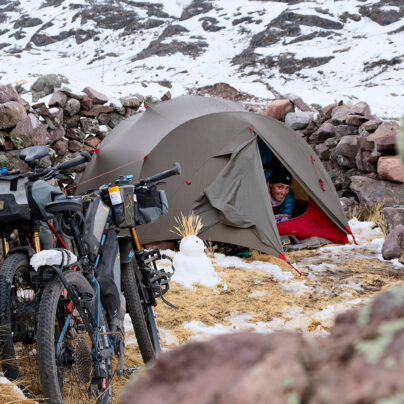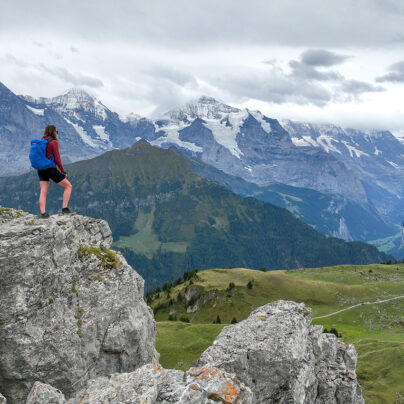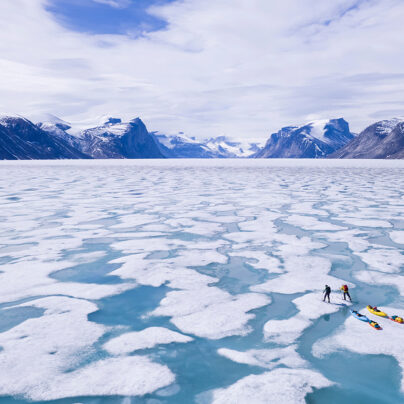Paddling Deep into Patagonia
Erin Bastian
My hood hugs tightly around my ears as I seek shelter from the driving rain. I look over each shoulder to check my two friends are still with me. The weather is persistent and menacing, sneaky and forceful. Yet, from the shelter of my hood, I’m still able to appreciate the unbelievably rich landscape that now engulfs me.
Patagonia is a staggeringly wild region of South America, shared by both Chile and Argentina. The Andes mountain range dominates it, keeping it wild and untamed. Along the western coast lies a network of glacial fjords flooded by the sea: it’s a kayaker’s paradise of islands, channels, and utter wilderness. With the only way in by boat, it has a protective armour of harsh remoteness that has allowed it to remain isolated from the modern world. For hundreds of miles along these Chilean shores, there is no sign of civilization: just thick vegetation, steep, intimidating cliffs and a sprinkling of fishing boats, eking out a living from the deep waters.
From the very beginning, when I was scouting online for possible paddling routes through this jagged coastline, I realised there was a 500-mile stretch that had no sign of human settlement at all: no roads, no houses, no shops, and a landscape that is barely mapped, even to this day. I never realistically thought the journey would be possible. Planning an expedition of this magnitude was beyond what I could imagine myself being capable of.
The journey here involved 26 hours of flying, 12 hours on a night bus and three days aboard a ferry. After managing to negotiate a remote drop-off with the ferry company, we found ourselves in a tiny fishing village called Puerto Eden, the only community on this long stretch of coastline. From here, we planned to paddle 500 miles south, self-supported, tracing the fjords to Puerto Natales, the next town along the coast. En route, we wanted to paddle as deep into the fjords as possible, penetrating channels that were too narrow for motorboats to reach. Our big hope was to reach Estro Peel, a fjord right at the base of the Andes, where the Patagonian ice field descends from the towering mountains directly into the sea. Adventure is defined in the dictionary as an unusual and exciting or daring experience. Kayaking deep into the Patagonian fjords would most certainly fulfill these criteria.
After ten months of planning, our small team of three was now sitting on a small jetty, packing enough food and gear into our kayaks to last us through our five-week expedition. It suddenly started to feel real. It was now finally time to immerse ourselves into the wilderness that we had travelled so far to explore.
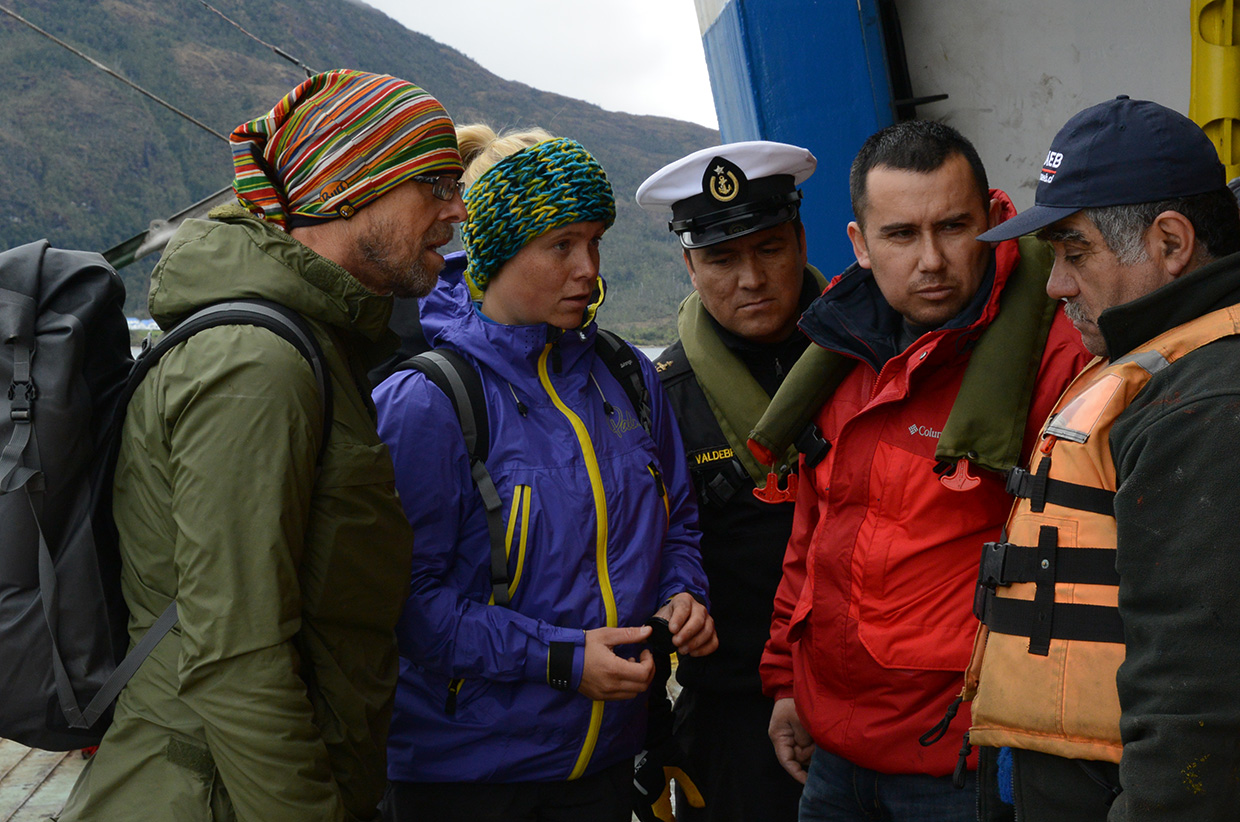
We paddled through the channels, alert and intimidated by what surrounded us. We were nervous of making mistakes, and were aware that every paddle stroke we made along these arteries was taking us deeper into the heart of the Chilean Andes. Our kayaks allowed us to explore beautiful and improbable landscapes more intimately than if we were travelling on land, and, as we were travelling under our own steam, they meant we could move at a pace where we can savour the sights, rather than just passing them by.
Travelling through the waterways felt like the most natural form of transport, as the thick craggy coastline offered no realistic options for walking. Each evening, we landed our kayaks to find a spot to pitch our tents. Patagonia doesn’t offer much in the way of natural campsites, so most evenings we would search for hours. More often than not, we’d have to fight, dig and flatten the terrain, only to end up with a generally boggy and mediocre campsite.
The rhythm of paddling became a form of meditation, giving us the opportunity to think and ponder life, or simply not think at all. Normal life requires planning and structure: it’s not often it allows you live in the moment. Out here, we could only work with our environment: like a strong dance partner it takes the lead, and you follow, trying to move effortlessly together.
Nature rarely provided us with sunshine during this early spring season but, when it came, it was a luxurious gift. We would soak it up at any opportunity: the first week was delightful as a high pressure sat over us. One thing I hadn’t given great thought to was the weather systems here. It rolls in from the Pacific, and then hits the high mountains, which block its path, forcing it to unleash its burden. These fjords were perfect weather nets, catching and holding dense rain clouds within their grasp for days on end. For the next four weeks, difficult weather and heavy rainstorms would smother us.
It wasn’t long before we experienced the kind of Patagonian weather that we’d heard previous adventurers speak of. A true test of our grit and determination was thrown at us with intense aggression. Winds of up to force 10 pummelled our tents, and driving rain soaked all our belongings, whether they were in a dry bag or not. It was relentless. Campsites became bogs; damp cloths became wet cloths. Crawling into wet thermals each morning tested my inner strength. I worked hard to keep my sleeping bag dry and it soon became the only precious cocoon of warmth and comfort I had. I would look forward to wriggling down into the soft feathers after a hard day and listen to the rain beating down on the fabric of my tent in its oddly melodious rhythm.
Our kayaks allowed us to explore beautiful and improbable landscapes more intimately than if we were travelling on land, and, as we were travelling under our own steam, they meant we could move at a pace where we can savour the sights, rather than just passing them by.

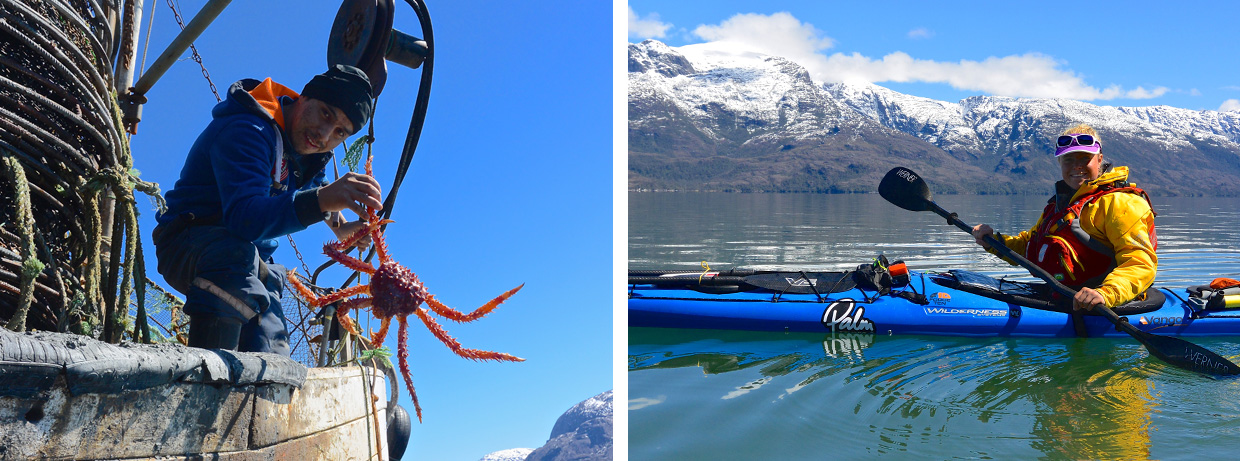
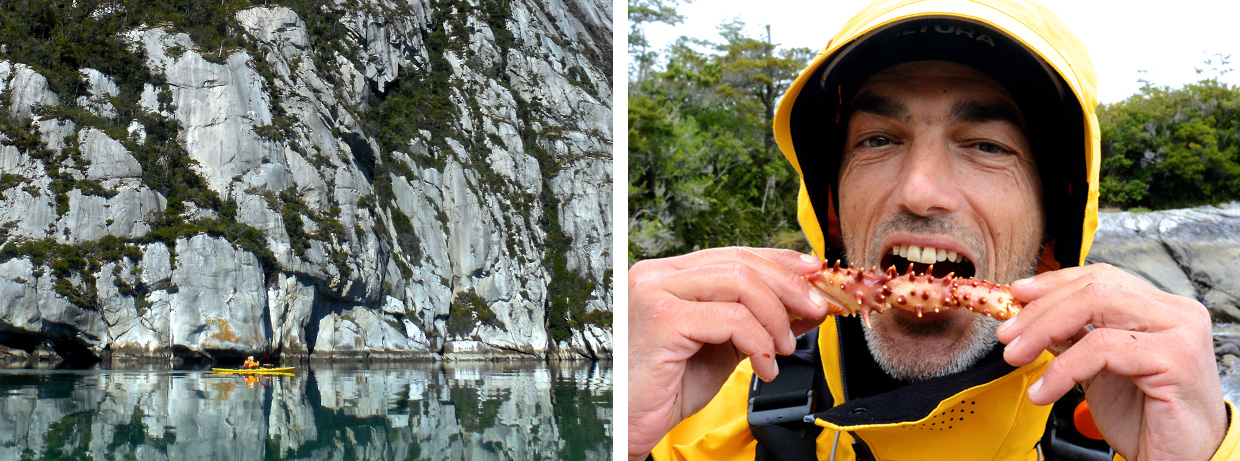
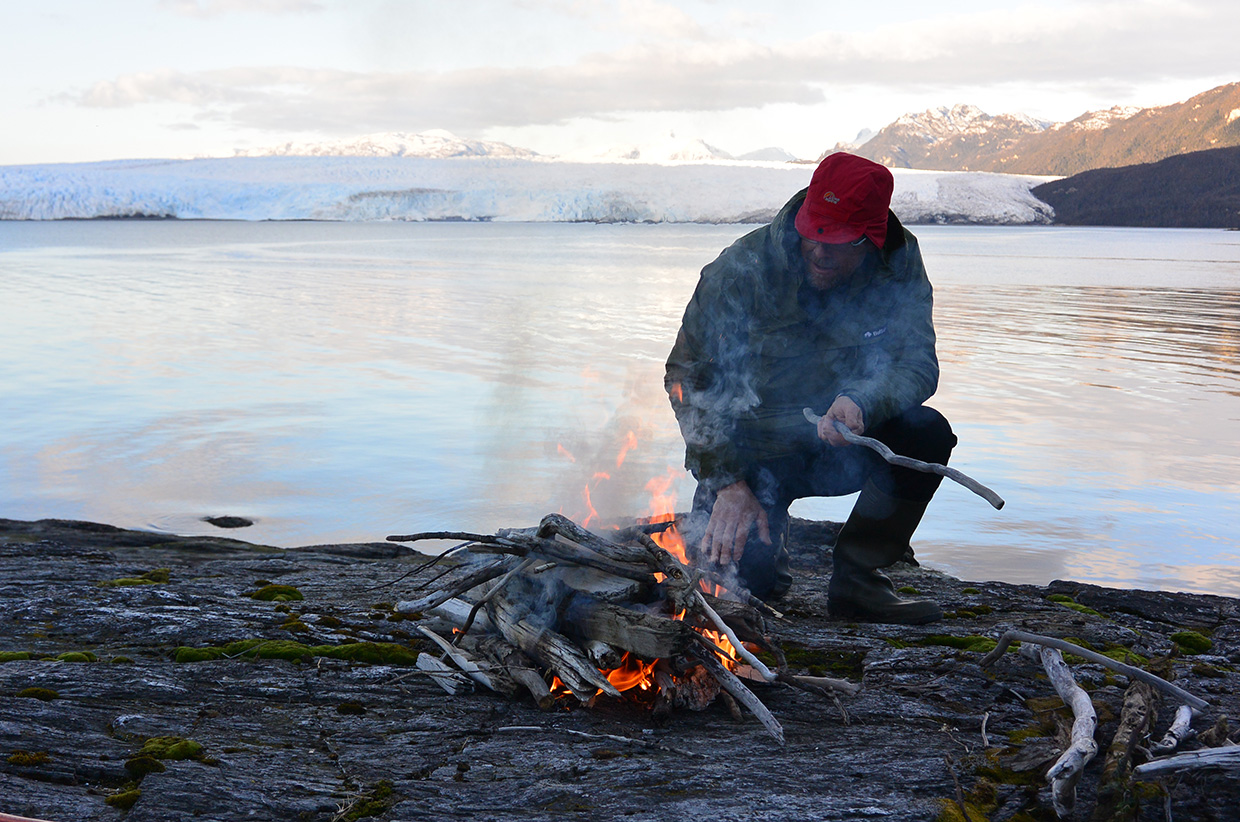
The weather was brutal: cold seeped into our bones and dense fog tried to dampen our spirits, but the sense of adventure we felt never disappeared. We loved exploring the isolated waters. The deep, steel-grey sea was home to an abundance of marine life. Lively hunting dolphins and stealthy sea lions kept us entertained during the days. Paddle-steamer ducks would paddle away from our approaching kayaks, taking great effort to run on top of the water to escape us. Albatross lifted our spirits with their gymnastic displays, and the rougher it got, the better their acrobatics became. They were a welcome distraction.
Our kayaks allowed us to explore beautiful and improbable landscapes more intimately than if we were travelling on land, and, as we were travelling under our own steam, they meant we could move at a pace where we can savour the sights, rather than just passing them by.
Time seemed to stop moving. I couldn’t tell you any days or dates, but I could reel off the pattern of the weather and the movement of the currents. It became normal to work in harmony with nature in order, synchronising our movements with the ebb and flood of the tide. It’s a forgotten lifestyle that people here lived for centuries.
We were halfway though our journey, and Estro Peel was slowly creeping closer. Here we were the furthest away from help, should anything go wrong. To add to the danger, we had to negotiate challenging waters, where currents swept huge icebergs towards us that were capable of crushing our tiny kayaks. It was crucial that we kept our wits about us to dodge these floating juggernauts. The deeper we travelled, the harder we worked as the tide combined with milky melt-water, which seemed to flow continually against us. Icebergs floated past on their pilgrimage to the ocean, ever growing in size and numbers. Channels began to narrow and mountains grew steeper. The buzz of adventure pulsed through our veins. It felt as though we were the only ones to have ever penetrated these ice-guarded pathways.

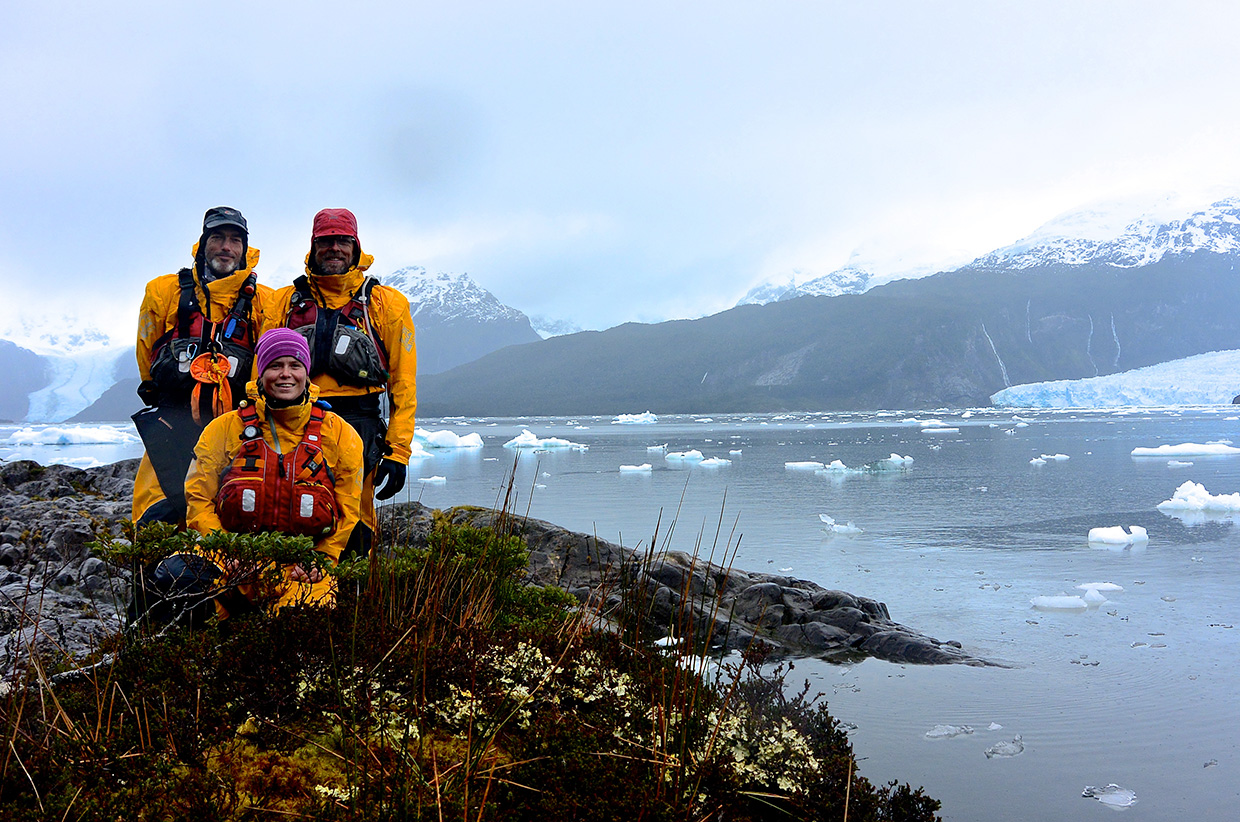
Finally, Estro Peel loomed around the next corner. We glided into the centre of its natural amphitheatre, met by an audience of several gigantic blue glaciers. These rivers of ice slowly creep down the cracks between peaks, carving a route towards the sea. Thunderous rumbles echoed around the basin where we shyly set up camp. This place was seriously alive. Fringing blocks would crack, tumble and smash, falling into the sea to drift with the currents and slowly melt away. We were in awe of the breath-snatching landscape.
The torrential rain, cold hands, wet thermals and hardship from earlier in the trip were long forgotten. We were at the pinnacle of this life-changing expedition. But, like summiting a mountain, we were only half way. Our journey wouldn’t be over until we reached the Puerto Natales, the next town along the coast, still some 250 miles away.
Blizzards, sleet, and hail chased us out of the channels and, within a few days, we were out of the steep mountains and paddling around rugged coastal islands. The rain became less intense, and we enjoyed the luxury of drying out our thermals in the blustery winds. Firewood became dry enough to light, a Godsend with our dwindling supply of fuel.
Our spirits were high now the end was finally within our grasp. There were only a couple more corners to round and channels to follow, and just one large open bay still to cross. Soon we would be nearing the end. The wind was on our side, but only in direction: it was still going all-out to unleash its violence to control us, knowing it still had us to play with. Force eight winds would whip up waves, surf us forward and try to trip us up with foaming crests. But very little could faze us now.
We crept through narrow passes, negotiating the currents. Fishing boats became an increasingly regular sight, a sure sign we were close to civilisation. On the final day, we woke to find a flat calm, mirror sea, with porpoise on frantic morning hunts breaking the silence. The currents gently swirled between the islands, making constantly flowing patterns with the long kelp. It felt as though we were passing through the final narrow gate between the mountains that took us into a new world. The sky was bright blue sky and the water was silky smooth: Patagonia had laid on its best weather to celebrate our achievement.
Pulling into the small fishing town of Puerto Natales felt unbelievably surreal. People, roads, cars, shops, houses, signs and sounds all assaulted our senses. The concrete and paving slabs felt odd beneath our feet as we stepped into the town. Without a doubt, it would take time to adjust back into real life.
Erin Bastian and two teammates paddled sea kayaks 800km over five weeks through a beautiful and remote wilderness in the Chilean Patagonia. Starting in Puerto Eden, they traveled south through the fjords and rivers and among tidal glaciers and icebergs until their finish point in Puerto Natales.
W: erinbastian.com
F: erin.bastian.50
T: @erinbastian
I: @erinbastian
